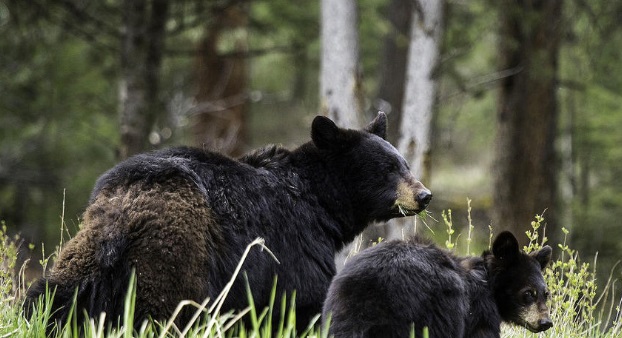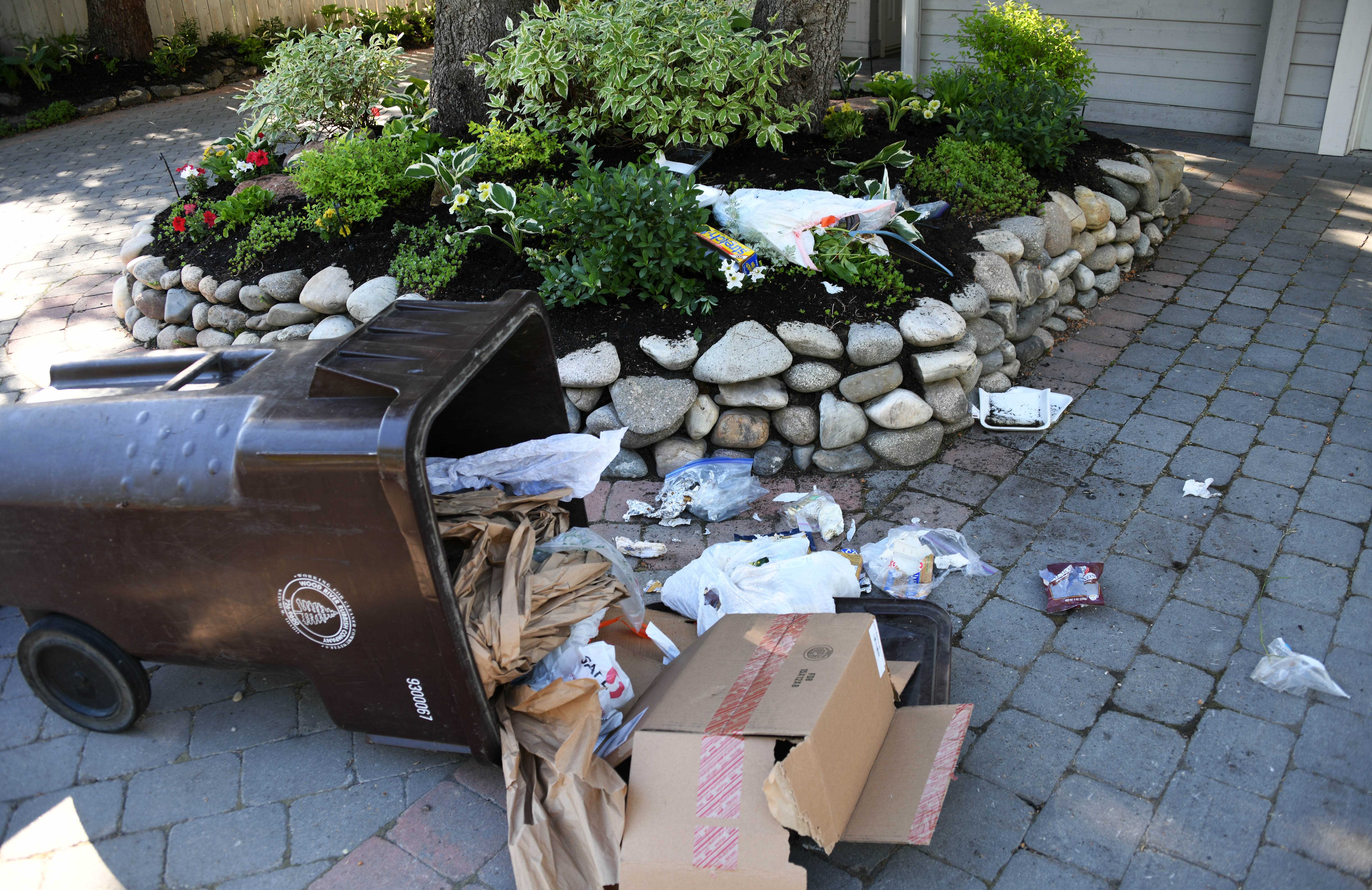
LEWISTON, ID – Idaho’s black bears are emerging from their winter dens, and the Idaho Department of Fish and Game is reminding drivers and residents to be aware of their increasing presence.
A driver struck a bear along US 95 just south of Culdesac early yesterday evening resulting in the bear being euthanized due to the injuries it received in the collision. There were no reports of injuries to the driver.
IDFG says black bears are waking up and they will be very hungry.
From IDFG’s Magic Valley Regional Office:
After spending the winter months burning their fat reserves hibernating, black bears will immediately start looking for food, mostly spring grasses, but pretty much anything that can provide easy calories. During hibernation, boars (male) black bears usually lose 15-30% of their body weight, while sows with cubs can lose up to 40%. After emerging from hibernation, black bears are on a quest to eat between 15,000 – 20,000 calories a day to build up their fat reserves, which means they are constantly searching for food.
Bears can smell food for miles
After leaving their winter dens, bears begin to search out food sources by using their extremely keen sense of smell. In fact, it is believed that a bear’s sense of smell is seven times better than a bloodhound’s and is often measured in miles.
That sense of smell is a great benefit for a bear. Being omnivores, meaning they eat both plants and meat, bears will eat anything they can find. And with the nose talent of a bear they will find just about anything. This can also be a great problem for a bear and for managers of wildlife. Using their amazing sense of smell, bears might be attracted to your neighborhood looking for a food reward which too often is that leftover food now fermenting in your garbage can.
It’s not too early for all Wood River Valley and other Idaho residents to do your part to ensure that bears, as well as all wildlife, do not become food-conditioned by finding a food reward around your house.

Securing garbage is the key to keeping bears wild
The safety of Wood River Valley residents, visitors and all Idahoans will always be the primary concern for Fish and Game when dealing with food-conditioned bears.
Wood River Valley residents, as well as other Idahoans, pride themselves on living in close proximity to wildlife. However, that also means everyone shares the responsibility to keep wildlife wild. Allowing bears to become comfortable living in your neighborhood could be a death sentence – for the bear. While a bear in your yard might be exciting, you must do your part to keep the bear wild.
Relocation of a food-conditioned bear is not an option. Often, the bear returns to where it was trapped because it knows there is a food reward waiting for them. Moving this bear might also just transfer the problem to another community or campground in the backcountry.
We all know it never ends well for the bear who becomes habituated to human food. The unfortunate reality is that once a bear has developed a repeated habit of searching out and acquiring food from human sources it becomes a threat to public safety and will be euthanized. But there is a very easy solution to that problem – every resident, and even our seasonal visitors, need to pledge to eliminate all chances for bears to get human food, ever!
Bears don’t belong in neighborhoods
When a bear learns that walking across your yard or deck is OK, it will continue that behavior. By doing nothing, the bear learns that people are harmless and that taking daily walks around your house is both acceptable and potentially rewarding if they find food.
If you have a bear around your house, or in your neighborhood, and, if it can be done safely, immediate action is necessary to haze the bear to let it know it is not welcome. This can be done by loud yelling, clapping your hands, banging on pots and pans, basically anything to scare it away.

Bears are very smart. They can learn quickly where they are not welcome. Hazing can be a very effective tool to keep bears out of communities and neighborhoods and in doing so, you will help preserve the wild nature of bears that is essential for their survival.
Keep yourself, your neighbors and bears safe
There are very simple things everyone can do to keep everyone safe and bears roaming the mountains where they belong.
- Secure household garbage in a garage or locked shed where bears cannot gain access to the garbage.
- Don’t put your garbage curbside until the morning of pickup.
- Birds don’t actually need bird feeders to survive during the summer months because of an abundance of natural food sources. A bird bath is an effective way to attract birds to a backyard. Residents are encouraged to take feeders down during this time. Bears can get a tremendous amount of calories from bird feeders, such as a 2,500-calorie reward from one pound of black oil sunflower seed, or 3,200-calorie reward from 32 ounces of hummingbird food.
- Don’t leave pet or livestock food outside where a bear can find it.
- Put an electric fence wire around chicken coops and beehives.
It’s up to everyone to keep our communities safe, while keeping bears, and all wildlife, wild!
For more information, please contact the Magic Valley Regional Office at (208) 324-4359 or your nearest Idaho Department of Fish and Game office.

